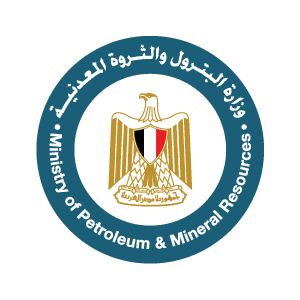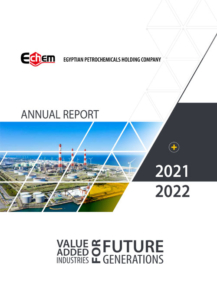The Silent Engine Behind Modern Industrial Marvels
Monoethylene glycol (MEG) may not be a household name, but its influence pervades many facets of modern life. This versatile chemical compound plays a critical role in various industries, driving innovations and enabling advancements that impact everything from textiles to antifreeze. In this article, we explore the significance of monoethylene glycol, its production processes, applications, and its indispensable role in industrial progress.
Historical Development of Polyethylene
Polyethylene, discovered accidentally in 1933 by Reginald Gibson and Eric Fawcett at ICI, underwent significant developments in the following decades. Karl Ziegler and Erhard Holzkamp’s breakthrough in 1953 led to the creation of high-density polyethylene (HDPE), while Ziegler and Giulio Natta’s collaboration in 1954 resulted in low-density polyethylene (LDPE). These discoveries facilitated polyethylene’s commercialization and widespread adoption in various industries due to its versatility, low production cost, and ease of processing.
Subsequent innovations led to the creation of variants like linear low-density polyethylene (LLDPE) and ultra-high molecular weight polyethylene (UHMWPE), further expanding its applications. Polyethylene’s historical development showcases a journey of accidental discoveries, scientific ingenuity, and persistent innovation that has profoundly impacted modern industry and everyday life.
Polyethylene is used in a vast array of products across numerous industries due to its versatility and favorable properties.
Understanding Monoethylene Glycol
Definition and Chemical Structure
Monoethylene glycol, commonly abbreviated as MEG, is a colorless, odorless, hygroscopic liquid with the chemical formula C2H6O2. It is a diol, meaning it has two hydroxyl (OH) groups, which contribute to its solubility and versatility in chemical reactions.
Properties of MEG
Physical State: Liquid at room temperature
Boiling Point: 197.3°C (387.1°F)
Melting Point: -12.9°C (8.78°F)
Density: 1.1132 g/cm³ at 20°C
Solubility: Highly soluble in water, alcohols, and acetone
Production of Monoethylene Glycol
Raw Materials
The primary raw material for MEG production is ethylene, derived from petroleum or natural gas. Ethylene oxide, produced by the oxidation of ethylene, serves as an intermediate in the production process.
Manufacturing Process
Oxidation of Ethylene: Ethylene is oxidized in the presence of a silver oxide catalyst to produce ethylene oxide.
Hydration of Ethylene Oxide: Ethylene oxide is then hydrated, typically in the presence of a catalyst, to produce monoethylene glycol along with small amounts of diethylene glycol (DEG) and triethylene glycol (TEG).
Purification: The resulting mixture is distilled to separate and purify monoethylene glycol from the other glycols.

Applications of Monoethylene Glycol
Antifreeze and Coolants
One of the most well-known applications of MEG is in antifreeze and coolants for automotive and industrial engines. Its low freezing point and high boiling point make it an ideal component for preventing engine overheating and freezing in extreme temperatures.
Polyester Fibers and Resins
MEG is a critical raw material in the production of polyethylene terephthalate (PET), which is used to make polyester fibers and resins. Polyester is widely used in textiles, packaging, and plastic bottles, making MEG an essential contributor to the modern synthetic fiber industry.
Deicing Fluids
Due to its ability to lower the freezing point of water, MEG is used in deicing fluids for aircraft and runways. This application is crucial for maintaining safety and operational efficiency in the aviation industry during winter months.
Industrial Applications
MEG serves as a solvent, humectant, and chemical intermediate in various industrial processes. It is used in the production of resins, inks, adhesives, and heat transfer fluids, showcasing its versatility and indispensability in manufacturing.
Natural Gas Processing
In the natural gas industry, MEG is used to inhibit the formation of hydrates during gas processing and transportation. This prevents blockages and ensures the smooth flow of natural gas through pipelines, especially in cold environments.

The Role of MEG in Industrial Innovation
Sustainability and Recycling
As industries increasingly prioritize sustainability, the recycling of PET has become a major focus. MEG plays a role in the chemical recycling processes that break down PET into its constituent monomers, allowing for the production of new, high-quality PET products from recycled materials.
Technological Advancements
Ongoing research and development efforts aim to enhance the efficiency and sustainability of MEG production. Innovations in catalyst technologies and process optimization seek to reduce energy consumption and minimize environmental impact, contributing to the overall advancement of the chemical industry.
Enhancing Material Properties
MEG’s chemical properties allow it to improve the performance characteristics of various materials. For example, its use in polyester production enhances the durability, flexibility, and resistance of synthetic fibers, leading to better-performing textiles and packaging materials.
Environmental and Economic Impact
Environmental Considerations
While MEG production and use have environmental implications, such as greenhouse gas emissions and resource consumption, efforts are being made to mitigate these impacts. Advances in sustainable production methods, recycling technologies, and responsible resource management contribute to reducing the environmental footprint of MEG.
Economic Significance
Monoethylene glycol is a vital component of the global economy, supporting numerous industries and contributing to economic growth. Its production and applications create jobs, drive innovation, and enable the development of new products and technologies that enhance quality of life.

Future Prospects
Emerging Applications
The future of MEG holds potential for emerging applications in new materials and technologies. Research into biobased MEG and its integration into biodegradable polymers could open new avenues for sustainable product development.
Market Trends
The demand for MEG is expected to grow, driven by the increasing consumption of PET and the expansion of industries that rely on MEG for various applications. Market trends indicate a steady rise in production capacity, particularly in regions with significant industrial growth.
(FAQs)
What is monoethylene glycol used for?
Monoethylene glycol is used in antifreeze and coolants, polyester fiber and resin production, deicing fluids, industrial solvents, and natural gas processing. Its versatility makes it essential in various industrial applications.
How is monoethylene glycol produced?
MEG is produced from ethylene through a process involving the oxidation of ethylene to ethylene oxide, followed by the hydration of ethylene oxide to produce monoethylene glycol. The final product is purified through distillation.
Is monoethylene glycol environmentally friendly?
MEG production and use have environmental implications, but advancements in sustainable production methods and recycling technologies aim to reduce these impacts. Efforts to develop biobased MEG and improve recycling processes contribute to sustainability.
What is the future outlook for monoethylene glycol?
The future outlook for MEG is positive, with growing demand driven by the increasing consumption of PET and the expansion of industrial applications. Innovations in production methods and emerging applications in new materials and technologies indicate a promising future.
Why is monoethylene glycol important in the petrochemical industry?
MEG is important in the petrochemical industry due to its role in producing essential materials like polyester fibers and resins, antifreeze, and industrial solvents. Its versatility and wide range of applications make it a critical component of the industry.

Conclusion
Monoethylene glycol, often operating behind the scenes, is a silent engine driving modern industrial marvels. Its versatility, chemical properties, and wide range of applications make it indispensable in various industries, from automotive and textiles to aviation and natural gas processing. As industries continue to innovate and prioritize sustainability, MEG’s role will only grow in significance, cementing its place as a hidden gem in the world of industrial chemistry.






